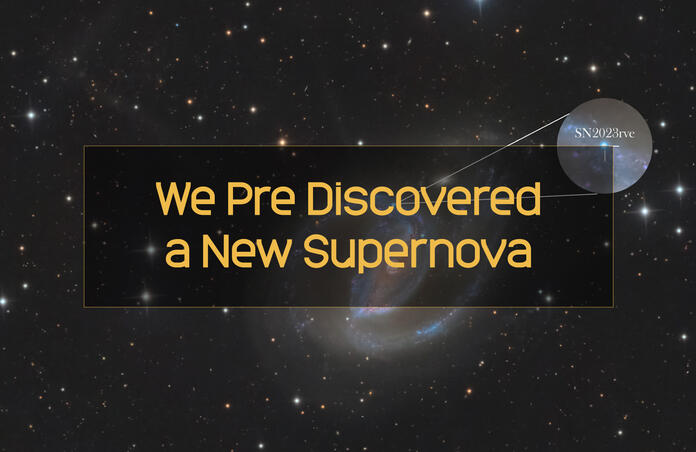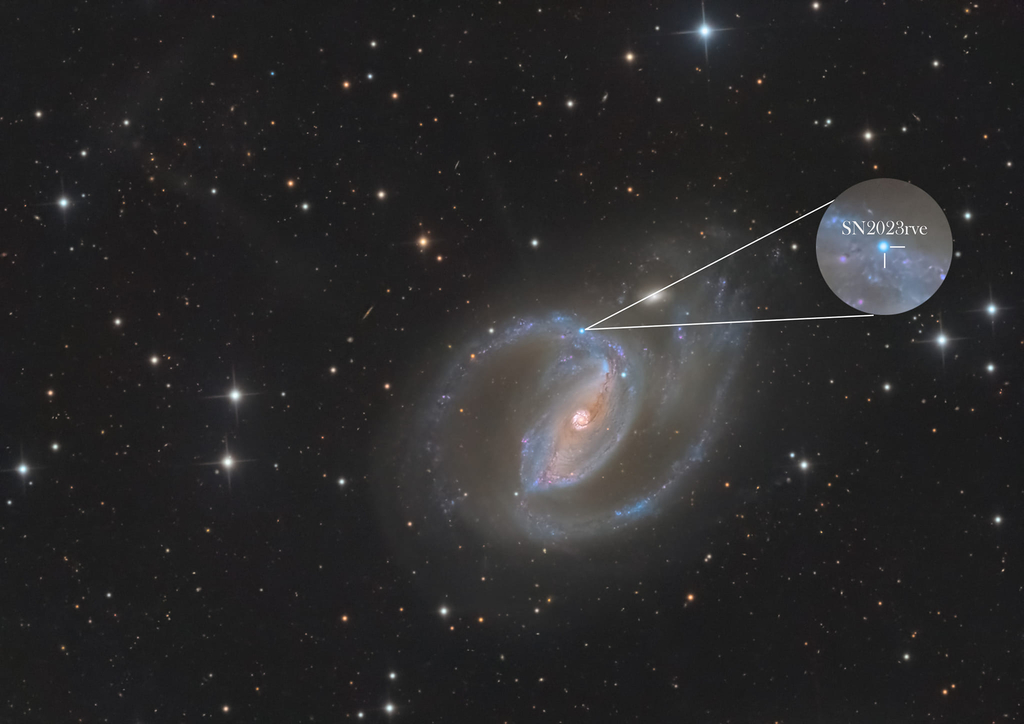A New Supernova Has Been Pre Discovered by Telescope Live

Our telescopes have captured images of a recent supernova called SN 2023rve, which exploded in the galaxy NGC 1097. SN 2023rve is now the brightest supernova in the sky, with a magnitude of about 13.9. It was officially discovered on September 8, 2023 by Mohammad Odeh (congratulations, Mohammad!).
But we have even more exciting news: we have pre-discovery observations of SN 2023rve, dating back to September 6, 2023 (56 hours before the official discovery)! We made these observations with our AUS2 telescope, which was scheduled to observe NGC 1097 in mid-August.
We have reported our pre-discovery observations to the official channel for these communications ( see https://www.wis-tns.org/astronotes/astronote/2023-247). These observations will be very important for astronomers studying SN 2023rve, as they will help them to better understand its early evolution.
We are excited to have played a role in the story of SN 2023rve and we are proud to be able to share our images of SN 2023rve with the world. It is a truly amazing sight! We encourage you to grab and process the datasets for NGC 1097 galaxy available in our archive, both from AUS2-CMOS and from the bigger 60cm telescope in Chile CHI1-CMOS.

What is a supernova?
A supernova is the explosion of a massive star at the end of its life. When a star runs out of fuel, it can no longer support its own weight and it collapses. This collapse triggers a thermonuclear explosion that releases an enormous amount of energy. Supernovae are some of the most energetic events in the universe. They can be seen billions of light-years away, and they can produce enough energy to power an entire galaxy for millions of years.
Why are supernovae important?
Supernovae are important for a number of reasons. First, they help to create new elements. When a star explodes, it releases the heavy elements that it has created during its lifetime. These elements are then incorporated into new stars and planets.
Second, supernovae help to distribute heavy elements throughout the universe. The shockwave from a supernova can travel through space for millions of years, spreading heavy elements far and wide.
Third, supernovae can trigger the formation of new stars. The shockwave from a supernova can compress gas and dust clouds, which can then collapse to form new stars.
IMAGE DETAILS
Data by Telescope Live. Processed by Soumyadeep Mukherjee
Equipment: Planewave CDK24, QHY600M, Astrodon LRGB Filters
Exif: 25*300 seconds exposure for each filter, Total integration time 8 Hours 20 minutes
Date: 13-16th September 2023
Location: EL Sauce Observatory, Chile
